The goal of marketing is to attract as many visitors as possible and create consumer interest. The best way to achieve this, is to mix SEO and content marketing.
>Share this post<
by Irina Ciutaco
February 18, 2020
The goal of marketing is to attract as many visitors as possible and create consumer interest. The best way to achieve this, is to mix SEO and content marketing.
While SEO generates brand visibility, by making sure that your e-commerce customers can find your website, captivating content is what will make them click and stay on your website.
With the market as saturated as it is, you are competing to make your product, brand or website stand out from the digital noise. Brands create blog posts, eBooks and social media posts are created everyday in order to convince people to that a particular product or service is the best one.
It is no secret that customers are researching their desired products and discovering brands by using different devices and channels , 66% of customers use more than one channel during the purchase decision journey.
Content is all about being noticeable, engaging and attracting clients on the Internet. The best way to encourage people is to be deeper and to reveal emotions.
As we have mentioned in one of our latest blog posts, emotions are very important in people’s decision making because they remember emotions, not text. This the reason why creating content and storytelling is very important for brands.
By mixing SEO and content marketing in one activity, marketers are able to convince clients from the discovery – the early purchasing phase.
SEO is an essential part of content discovery as it turns out that it drives 51% of all visits to B2B and B2C websites by influencing all digital marketing channels and offline sales.
With all considered, it is highly recommended to identify keywords which prove a commercial intent because marketers will be able to optimize the content that will convert.
While SEO generates brand visibility, by making sure that your e-commerce customers can find your website, captivating content is what will make them click and stay on your website.
With the market as saturated as it is, you are competing to make your product, brand or website stand out from the digital noise. Brands create blog posts, eBooks and social media posts are created everyday in order to convince people to that a particular product or service is the best one.
It is no secret that customers are researching their desired products and discovering brands by using different devices and channels , 66% of customers use more than one channel during the purchase decision journey.
Content is all about being noticeable, engaging and attracting clients on the Internet. The best way to encourage people is to be deeper and to reveal emotions.
As we have mentioned in one of our latest blog posts, emotions are very important in people’s decision making because they remember emotions, not text. This the reason why creating content and storytelling is very important for brands.
By mixing SEO and content marketing in one activity, marketers are able to convince clients from the discovery – the early purchasing phase.
SEO is an essential part of content discovery as it turns out that it drives 51% of all visits to B2B and B2C websites by influencing all digital marketing channels and offline sales.
With all considered, it is highly recommended to identify keywords which prove a commercial intent because marketers will be able to optimize the content that will convert.
How do you combine SEO and content into one function?
Generating compelling content optimization requires time and continuous planning, however, there are five things that marketers can manage in order to build a strong base.1. Know your audience
The customer should be in the centre of everything that a brand is managing: products, experience and marketing strategy.
Marketers seek to create interesting content on relevant topics in order to create loyal audiences and reach their business objectives.
In case you didn’t know, 80% of brands admit that they don’t know their customers. The brands which do understand the ambitions and struggles of their audience are able to deliver better and more impressive content which engages revenue, growth and long-term sustainability.
Tips for creating marketing with user intent:
- Analyse how users are engaging with your content and identify what causes interest and results. In case your content is not very engaging, you might need to change or adjust it.
- Consider the customer journey and how customers are engaging with different types of content across channels and devices. Understand conversion and buying behaviour as customers use different devices such as smartphones, tablets and desktops.
- Do continuous customer analysis and perform regular analysis of the customer-brand relationship.
- Create ongoing customer analysis and perform regular analysis of customer-brand interactions.
- Analyse ongoing customer behaviour because the client’s interest can quickly change.
2. Have a purpose
As every brand needs a mission statement, the content has multiple purposes: to inform, convince, inspire or entertain.
In order to create high-quality content, it is important to follow these three Es:
- Experiment by using different content types.
- Experience by making your audience resonate to what you are creating.
- Engage by allowing your audience to come back for more.
- A brand’s voice should speak to the right customers even if it’s professional or edgy.
As in every competitive discipline, you should set pragmatic and specific goals for your content, no matter its purpose: organic traffic, social engagement or revenue.
3. Create and improve the content
After covering the target audience and purpose, the next step is to create and optimize content in order to get maximum visibility.
Every piece of content can always be improved through optimization, through social media or email marketing.
Therefore, we have gathered some tips for successful content optimization:
- Content should be focused on the client and topics should be relevant for the demographics, behaviours and interests;
- Use the keywords relevant to your business and the ones which are searched by the people for your products;
- Optimise your website for mobile as it turns out that brands which have a poor mobile optimization get 68% less traffic.
4. Mix quality and quantity
A lot of content is produced every day and according to Smart Insights, every minute 500 hours of video are uploaded to Youtube, approximately 1, 500 new WordPress posts are published, 3. 3 million new Facebook posts are being published while 448.000 new tweets appear on Twitter.
Therefore, it is better to focus on the quality, not on quantity.
However, the average person would rather consume intelligent content that is personalized, relevant and handy to them.
Rich content is very effective and helps customers reach their goals.
Storytelling through memorable and engaging content brings brands in the attention of the readers.
5. Evaluate results
As marketers have access to a bunch of real-data to gain content performance insights and measure metrics in order to determine Return on Investment.Brands can gain experience with every content campaign, whether it accomplished or not its goals.
- Content failures: compare underperforming content with the previous successful content and pay attention to traffic, conversions and revenue associated or influenced by content.
- Content wins: Establish what has made your best content be seen – try to replicate that by turning anomalies into regular occurrences.
Conclusion:
To sum up, in search for the right audience, content needs to boost its value with optimization. Content must drive business results, by providing that the content is search engine-friendly.
More to explore
Here’s an overview of the latest improvements that are now available in the Kooomo platform.
In the next few years, we are foreseeing an impressive increase for the global retail industry. While this can be beneficial for the global eCommerce industry, it also means that there will be more competition, as well.

 en
en 

